Real Estate Inspection Services
|
S Traps - do they really siphon?
"S-Traps" Do They Really Siphon?
The "S-Trap" of a sink drain is often called out due to its design which may promote siphoning of the drain, allowing sewage gasses to enter the living space of the house causing a significant nuisance and potential health hazard.
Although we can mentally visualize what occurs in this plumbing drain design, I always tend to question what actually occurs.
So when the opportunity arose, I took some thermal imaging scans of the S-trap configuration during one of my home inspections.
I alternated between hot and cold running water. First heating pipe with hot water and then running cold water through it and evaluate the thermal anomaly that indicates water passing through the piping system.
In my first test I simply turned on the hot water after cooling down the pipe with the drain stop in the open position.
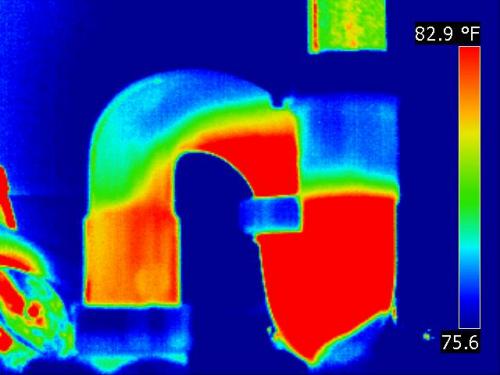
The result shows that water flows over the inverted neck of the drain leaving a bubble of air at the top of the neck and does not appear to promote siphoning effects expected.
Next, I filled the vanity basin to the overflow and opened the drain stop. There was an obvious rise in water level on the trailing end of the inverted trap.
I repeated the process with hot water flowing into a cold pipe.
I repeated the process with hot water flowing into a cold pipe.
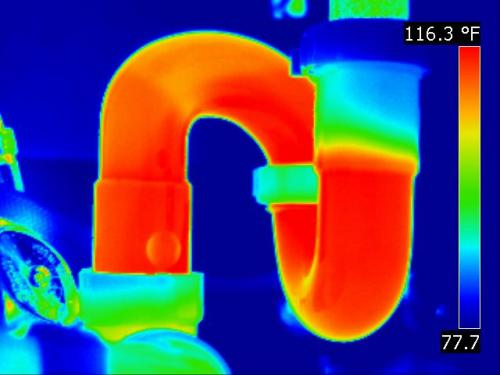
I then repeated with cold water flowing into the hot pipe.
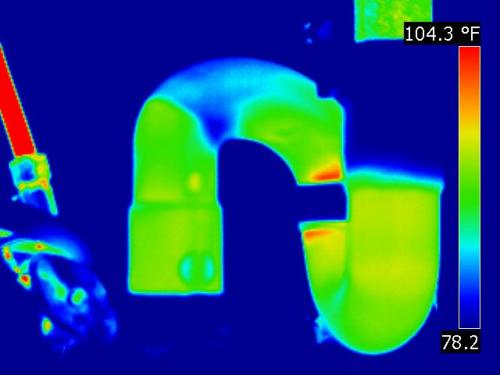
Both tests indicate that the drain pipe filled to almost near capacity which could allow siphoning of the sink drain trap.
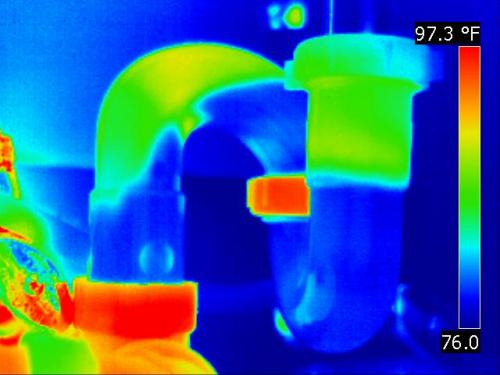
During this experiment the piping used for the drain was larger than normally experienced, and the horizontal ware was level with the bottom of the drain trap. This condition significantly reduces the suction pressure that could occur that is required to siphon out the drain trap.
Though I did not observe evidence that the sink drain trap siphoned below the capacity of the trap in this instance, levels of water within the drain had risen to a point where siphoning would normally occur under some circumstances.
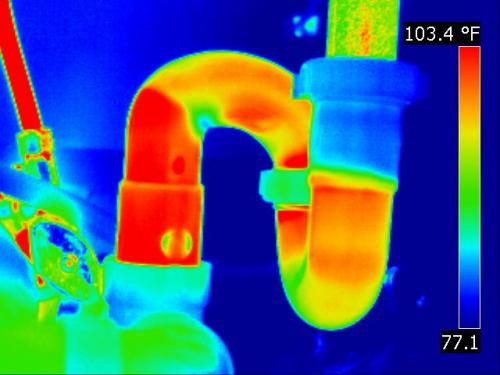
Decreasing the size of the drain tailpiece and having a greater vertical drop from the inverted trap would likely cause suction sufficient to overcome the air brake caused by water within the trap.
I will continue to evaluate the S-trap configuration as they occur in my home inspections and attempt to verify the siphoning effect of this configuration.





